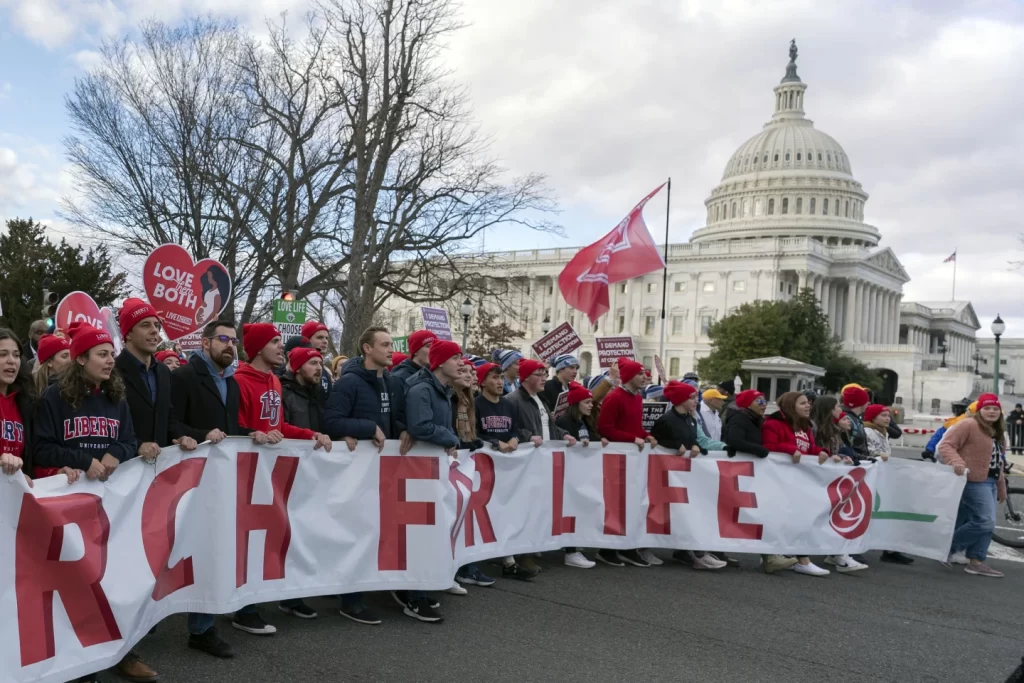
A year ago, anti-abortion activists from across the U.S. gathered for their annual March for Life with reason to celebrate: It was their first march since the Supreme Court, seven months earlier, had overturned the nationwide right to abortion.
At this year’s march, on Friday, the mood will be very different — reflecting formidable challenges that lie ahead in this election year.
“We have undeniable evidence of victory — lives being saved,” said John Seago, president of Texas Right to Life. “But there is also a realization of the significant hurdles that our movement has right now in the public conversation.”
Moreover, anti-abortion leaders know that their side has a seven-state losing streak in votes on abortion-related ballot measures. Even in red states such as Ohio, Kansas and Kentucky, the outcomes favored keeping abortion access legal.
“We have been around for more than 50 years, and I don’t know of any year that was easy,” said Carol Tobias, president of the National Right to Life Committee.
“But it definitely got harder after Dobbs,” she added. “We have a lot of work ahead of us.”
The key consequence of Dobbs was to return decision-making on abortion policy to individual states. Some Democratic-governed states — such as California, New York and New Jersey — have strengthened protections for abortion access. Roughly 20 states with Republican-controlled legislatures have either banned abortion or sought to impose new restrictions.
After Dobbs, “I didn’t want anyone to get the false sense that we were at the end of our work,” said Brent Leatherwood, an abortion opponent who heads the Southern Baptist Convention’s public policy wing.
“We’ve gone from a focal point at the federal level to 50 different focal points,” he said. “It may be another 50 years before we truly establish a culture of life, where preborn lives are saved and mothers are supported.”
Even the current claims of lives being saved due to the Dobbs decision are subject to question. While abortions have decreased to nearly zero in states with total bans, they have increased elsewhere – notably in states such as Illinois, Florida and New Mexico, which are near those with more restrictions.
Thus the theme of this year’s March for Life strives to convey support for women facing unexpected pregnancies: “Pro Life: With Every Woman, For Every Child.”
“ Pregnancy care centers and maternity homes are the very backbone of our movement,” March for Life president Jeanne Mancini wrote in a recent opinion piece.
She and her allies have encouraged states to offer support programs for new mothers in need — helping them find housing, jobs and health insurance.
Among the scheduled speakers at the march is Jean Marie Davis, executive director of Branches Pregnancy Resource Center in Brattleboro, Vermont. Davis says a similar center in New Hampshire helped her break free several years ago after she became pregnant while ensnared in a sex-trafficking operation.




